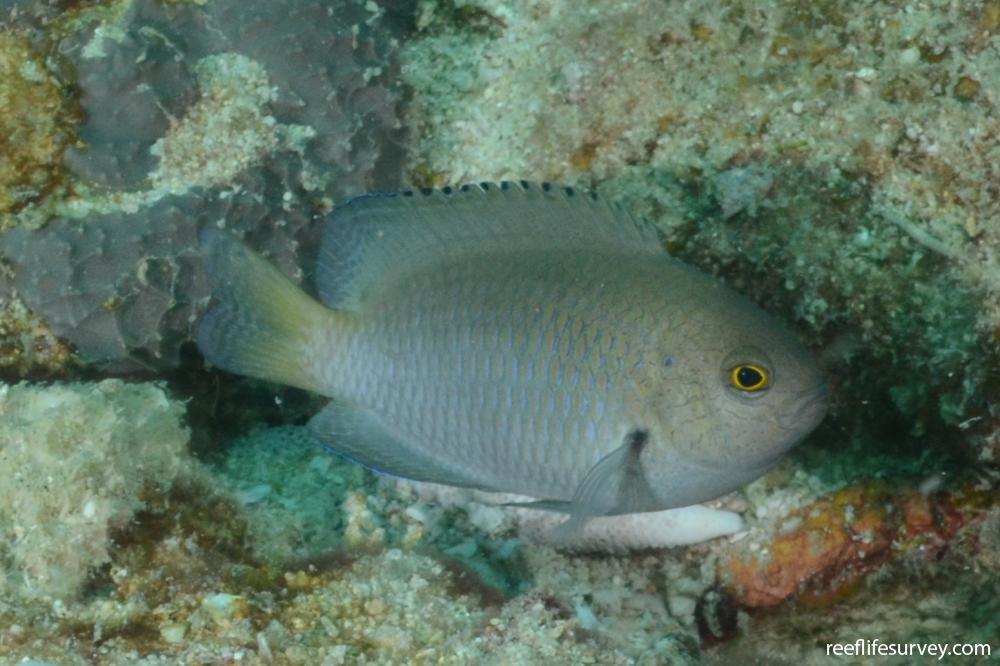Pomacentrus limosus
Muddy damselSimilar Species
Same Genus
Distribution
Localised, Tropical Indo-Pacific
Description
Pale body, black tips on dorsal spines, gold iris and light ear spot. Found on inshore, silty northwestern and northern Australian reefs. Likely often confused with P. nagasakiensis, with Australian records of that species west of Torres Strait probably P. limosus. The subtle difference in appearance between the two seems to include a smaller black spot at the base of the pectoral fin in P. limosus, where there is a large, obvious black patch in P. nagasakiensis.
Information
Max Size: 5 cm
Sea Temperature Range: N/A
Depth: 8-10m
Habitat Generalization Index: 3.1
Also referred to as the SGI (Species Generalisation Index), this describes the habitat niche breadth of the species. Species with values less than 15 are found in a relatively narrow range of reef habitat types (specialists), while those over 25 may be found on most hard substrates within their range (generalists). Learn more here.
Conservation and Rarity
IUCN Status: Not Evaluated
Occurrence: Frequent (13.0% of sites)
Occurrence describes how often the species is found on surveys within its distribution. It is calculated as the % of reef sites surveyed by RLS divers across all the ecoregions in which the species has been observed
Abundance: Many (46 per transect)
Abundance is calculated as the average number of individuals recorded per RLS transect, where present.
Edit by: Rick S-S












































![Pomacentrus sp. [rhodonotus]](https://images.reeflifesurvey.com/0/species_f2_58d8856ad74db.w400.h266.jpg)





